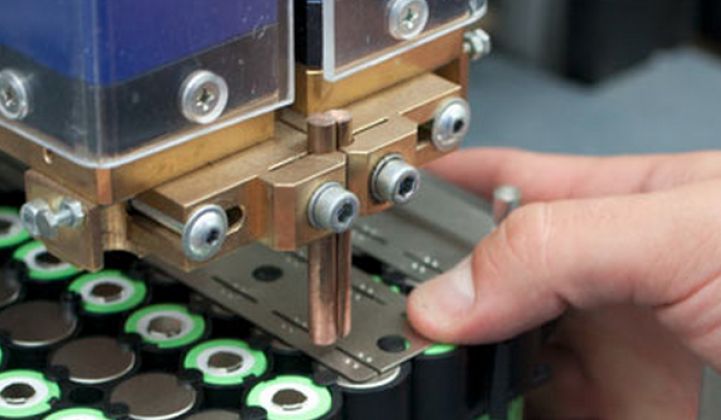Batteries have been beating expectations in recent years as costs continue to fall. That's good news for the storage industry, but reveals a shortcoming in the scientific understanding of the trend.
That discrepancy prompted UC Berkeley professor Daniel Kammen to devise a new model, recently published in Nature Energy -- and it ended up predicting that future cost declines will occur at a pace faster than identified in previous analyses.
Scholars have modeled clean-energy cost declines based on single factors, like annual production or cumulative production. These one-factor models approximate reductions from learning by doing: The more an industry deploys its product, the better it gets at it.
These models have a high explanatory value, but they didn’t see the recent battery-cost drops coming. They overestimate lithium-ion costs in the 2010-2015 period, the most recent years in the data set Kammen and his colleagues examined.
Their new model explains cost as the function of two variables: production volume and cumulative patents issued under the international Patent Cooperation Treaty.
When the researchers plugged in the latest battery production forecasts, with the assumption that patent activity continues at the average rate from the last five years in the dataset, they found a striking prediction.
“We find lower cost reductions than existing forecasts in the literature, which in the past has found a systematic underestimation of falling electric-vehicle battery costs,” the study says.
At the battery pack level, lithium-ion needs to hit the $125 to $165 per kilowatt-hour range to compete with internal combustion engines (based on 2015 gas prices). The two-factor model predicts EV cost-competitiveness will arrive between 2017 and 2020. This is earlier than the previous literature predicts.
The model also covers solar with batteries. If the solar industry in the U.S. hits the Department of Energy SunShot goal of deploying PV for $1 per watt (which it has for large projects), residential solar-plus-storage will be widely competitive by 2020. The combination would offer a levelized cost of energy of $0.11 per kilowatt-hour.
That would transform residential storage from a niche item for powering affluent families' homes during blackouts into a cost-effective investment for anyone who pays a lot for electricity.
Since the model includes both deployment and research, the scientists could toggle the dials of those two variables to see how one fares without the other.
Scientific innovation comes out on top.
In one test, the authors scaled down the rate of patent development by one-third. To still beat the energy storage cell cost of $100 per kilowatt-hour by 2020 in this scenario, the industry would need to deploy an additional 307 gigawatt-hours globally.
Keep in mind that Tesla’s Gigafactory aims to produce 35 gigawatt-hours, and it’s not yet completed. Deployment alone is not a practical way to achieve cost declines if scientific innovation drops off.
“At the most extreme case of no new innovation, the opportunity cost of meeting cost reduction targets through deployment alone would be extremely high, in exceedance of $140 billion through 2020,” the authors write.
That point is more than academic. The Trump administration has proposed sweeping budget cuts across the Department of Energy, which has traditionally spurred energy innovation through research funding.
Reports surfaced this week of impending layoffs on the order of 525 jobs at the national labs run by the DOE. Labs in that network performed groundbreaking early-stage research that led to the commercialization of lithium-ion technology, and they continue to break ground on the sort of next-generation chemistries that could spur the “learning by innovation” curve described in Kammen’s model.
“Right when batteries are doing this great stuff, we’re seeing a trail-off in investment,” Kammen said. “We need the Department of Energy to step up; we need the private sector.”
The White House has signaled the opposite intention, although the DOE retains stronger support in Congress, which ultimately controls the budget.
If there's a bright spot here, it's that lithium-ion costs are following the path of solar, only faster.
“For the same amount of money invested and patents generated, batteries are equal to or ahead of where solar was,” Kammen said.
To keep up that pace, he added, it will be important to maintain a robust research ecosystem with many different labs, companies and universities competing for funds and patents. When money gets concentrated in a few monopolies, they tend to under-innovate.
It also helps that storage has an array of viable technologies, although lithium-ion has dominated the market thus far. This diversity bodes well for continued innovation.



